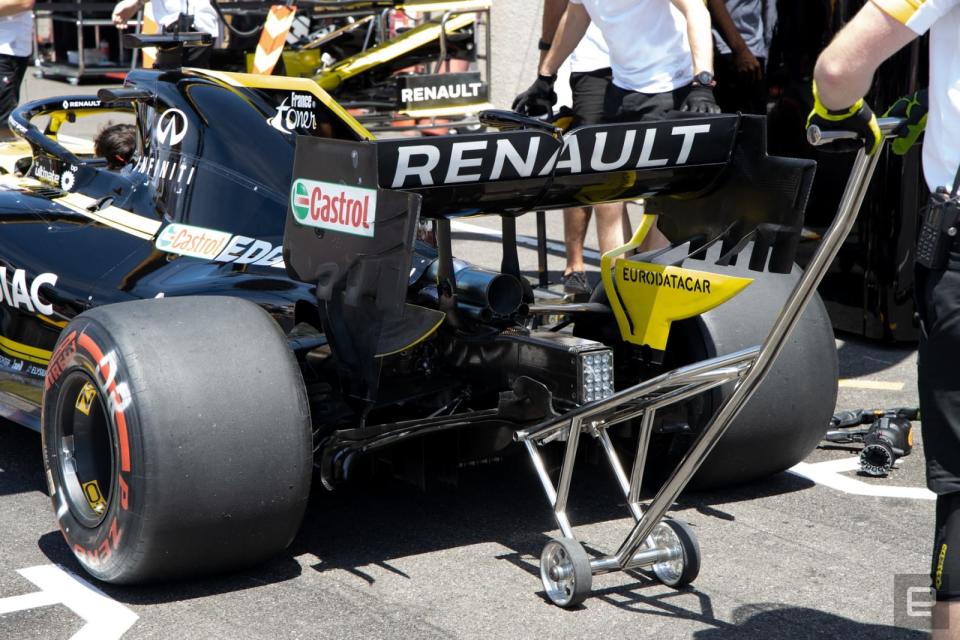Formula 1's underdogs struggle with the technical challenges of the sport
Changes are coming, but they might not be big enough for teams like Renault.
As Renault approached the French Grand Prix, a lot was at stake. The race was on the team's home turf, at a make-or-break point in the season. Nobody was panicking. Yet. Despite having won twice in 2018 with Red Bull, new driver Daniel Ricciardo knew what he'd signed up for with Renault. The team was ready: It came in with both engine and chassis changes.
But the Paul Ricard circuit at Castellet in France was not the best test for Renault, given the high speeds and the team's continuing aerodynamic issues. The changes to the chassis and motor didn't help, a fact confirmed in qualifying on Saturday. Ricciardo was on the fourth row in eighth place and Nico Hulkenberg in 13th -- not the results Renault was looking for.
Things didn't improve during the race. Hulkenberg managed to advance up the field to finish in eighth. And while Ricciardo cleared the checkered flag in a respectable seventh place, he was issued two five-second penalties for leaving the track. Because of that, he finished out of the points in a so-close-yet-so-far 11th position.
As I watched, the problems for Renault and other midfield teams really stood out. On a high-speed track that rewarded horsepower and aerodynamic downforce, Mercedes, Ferrari and other rich, top-tier teams dominated. While Hulkenberg finished in the points, he (and nearly all other teams) were literally lapped by Lewis Hamilton. In the end, it was a dull race for the few fans that did attend and another disappointment for Renault. Here's how an upcoming F1 team saw a promising season go so wrong.

Formula 1 is no longer about brute horsepower and the smell of gasoline. Since its '80s and '90s heydays, F1 has transformed into a greener, safer and more technologically advanced sport. Cars are now powered by the most efficient and complex hybrid gasoline/electric motors in the world.
The power is still brutal, but it's clean. The 1.6-liter turbocharged engines generate 800 horsepower. Charged by regenerative braking and redundant turbo energy, batteries tap an additional 160 horsepower for 33 seconds per lap. With all that engaged, the cars can hit 230 mph on the straights. At the same time, they have the world's most efficient gasoline vehicle engines, too.
Along with the green emphasis, F1 is safer than it's ever been. Where fatal accidents seemed to happen almost every year in the '70s and '80s, there has only been one death in the last 25 years. The sport's body and most supporters would never turn the clock back to those ugly times. What real fans do want is more sport to this sport.
To achieve that, teams and fans endure endless rules covering everything from development to racing. For instance, Ferrari's Sebastien Vettel was judged to have re-entered the track dangerously near the end of the recent Canadian Grand Prix. The subsequent five-second violation, added after the race ended, handed the victory to Mercedes' Lewis Hamilton and aggravated many fans of the sport.
The rules and complexity of F1 are putting off fans, but it's the costs that are especially challenging for a mid-tier team like Renault. At the French Grand Prix at Castellet, I spoke with team leaders and the drivers, Daniel Ricciardo and Nico Hulkenberg, about the new challenges facing F1.
Tricky rules and trickier tech
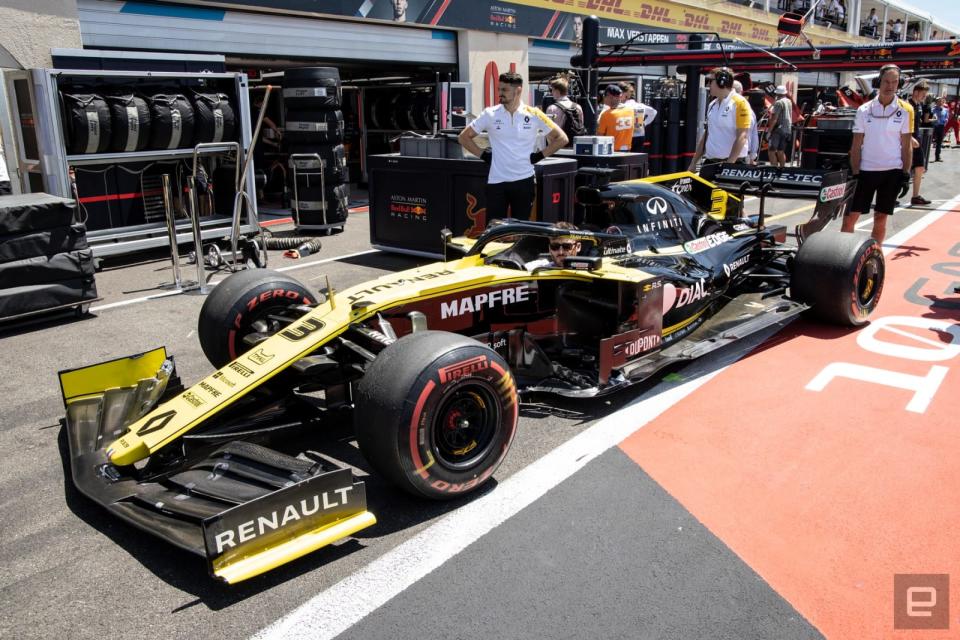
If you haven't been following F1 for awhile -- you wouldn't be alone -- here's a quick explainer on the major new rules and cutting-edge technology.
In the '80s heyday of F1 power, BMW's 1.5-liter M12 engine produced up to 1,500 horsepower. While that created incredible speeds (and sounds), the cars were extremely wasteful. Since 2014, F1 cars have packed complex turbocharged hybrid engines, converting half the fuel energy to road power. "The rules right now in Formula 1 push the renewable element and the efficiency," said Renault engine technical director Remi Taffin during the French Grand Prix.
The motors, so complex that they're called power units, tap energy that's normally wasted from the turbocharger and braking to charge a small battery. This then feeds energy back to an electric motor, making them more efficient than any diesel or gasoline engine. "In Formula, there's really that desire to burn less gas on each lap," said Renault Sport Racing hybrid engineer Nicolas Espesson.
F1 teams have also pushed the development of these motors -- both in power and efficiency -- at an incredible rate. "Compared to 2014, the power output [in 2019 cars] is 109 horsepower greater using the same amount of fuel," Mercedes has said.
On top of that, F1 has numerous rules that limit the way cars can operate. Teams are limited to five engines per car per season, rather than swapping out power units after every race. "We used to have motors that could last for about 300 km (200 miles), now we have motors that have to go for 7-8,000 km (4,400-5,000 miles)," said Taffin.
There are further restrictions on wind tunnels, road testing, computer simulations and, particularly, racing, with stewards watching for illegal or dangerous incidents. The main aim is to increase driver safety, limit the financial advantages of richer teams and keep the sport competitive. The latter two objectives have been wildly unmet, however.
Insane tech requires equally insane bank balances

Renault might be one of the largest car builders in the world (in alliance with Nissan and Mitsubishi), but when it comes to F1, its budget is far below the top-spending teams of Mercedes, Ferrari and Red Bull. That's because it's limited by parent Renault, which must answer to its investors.
According to team financial figures (compiled by Racefans.net), Ferrari spent $410 million, Mercedes $400 million, Red Bull $310 million, McLaren $220 million and Renault $190 million in 2018, not including marketing and driver salaries. "Clearly a massive performance gap exists between the 'big three' -- Mercedes, Ferrari and Red Bull -- and the rest," said Racefans. "This is reflected in the size of their budgets."
It costs about $100 million to design and field an F1 car, with the rest of the budget going to development. That means that Renault has just $90 million to spend on future designs, compared to $300 million for Mercedes.
A lot of that budget goes on R&D -- which was apparent when I visited Renault's F1 manufacturing and design facility in Enstone, UK. The company recently spent about $60 million updating the facility, which it re-acquired from Lotus in 2015.
In a bid to keep teams competitive regardless of budget, the rules restrict certain design aspects. Wind tunnel use is limited to 60 hours and 68 individual test runs per week, and teams must use 60 percent maximum scale models with winds no faster than around 120 mph. Even aerodynamic simulation (CFD or computational fluid dynamics) testing is limited. Winter track testing takes place over just eight days and in-season testing happens over four two-day sessions.
Teams have to make the most of every test.
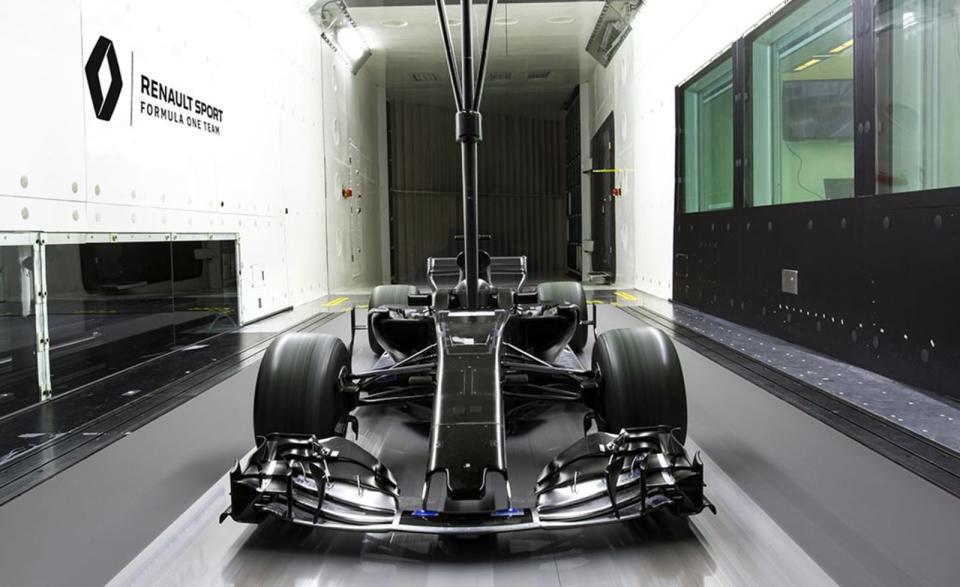
The Enstone facility produces just four or five cars, each one worth a reported $70 million. It takes about 150,000 hours and 15,000 parts to make each one. Renault employs more than 100 designers that work in an open space "white room" to create around 20,000 CAD drawings.
The parts are made of exotic materials like titanium, advanced carbon fiber and a high-nickel alloy called Inconel used for exhaust systems. Many of them are manufactured in a clean, dust-free room with finely controlled temperatures and air pressure.
Renault also has a 30,000 square foot wind tunnel and state-of-the-art observation room where 20 engineers monitor each race. It also has a highly advanced car simulator that lets engineers test vehicle design tweaks.
To justify all this expense and the idea of operating a factory F1 team in the first place, Renault pitched it as a marketing opportunity, particularly in Asia. "We lacked a marketing tool to develop the name Renault in countries where it wasn't known and to make the image of Renault more attractive," said Renault Sport president Jerome Stoll. "In the Chinese market, which is a very targeted part of Renault's expansion ... we've had particularly good exposure with this sport that is well represented on TV, radio, etc."
"At the same time, when we get a good result, we have a lot more people interested in the brand and interested in coming to Grand Prix," Stoll added during the Castellet race.
A pressure cooker home race

Unfortunately for Renault, those good results failed to manifest during the early part of the 2019 F1 season. Being in the points (top 10) was no longer good enough, and Renault wasn't even pulling that off, with just five top 10 and no podium finishes in the first seven races. At the same point in 2018, Renault already had ten finishes in the points.
Given all that, there was a particularly powerful magnifying glass pointed at Renault for the French Grand Prix. And many in the press were wondering if Daniel Ricciardo was getting tired of losing with Renault. However, when I interviewed Ricciardo on the day before the race, he was his usual chipper self. "I am very happy with the team and what I'm trying to build up here with the engineers," he said.
As Stoll explained ahead of the race, "When Daniel came to the team, we were very clear in explaining the situation and we never tried to hide anything," said Stoll. "We said, 'here's where we are, if you want to be a world champion, it's not going to be with us.' So he made a choice to build a future with us, and that's extremely important."
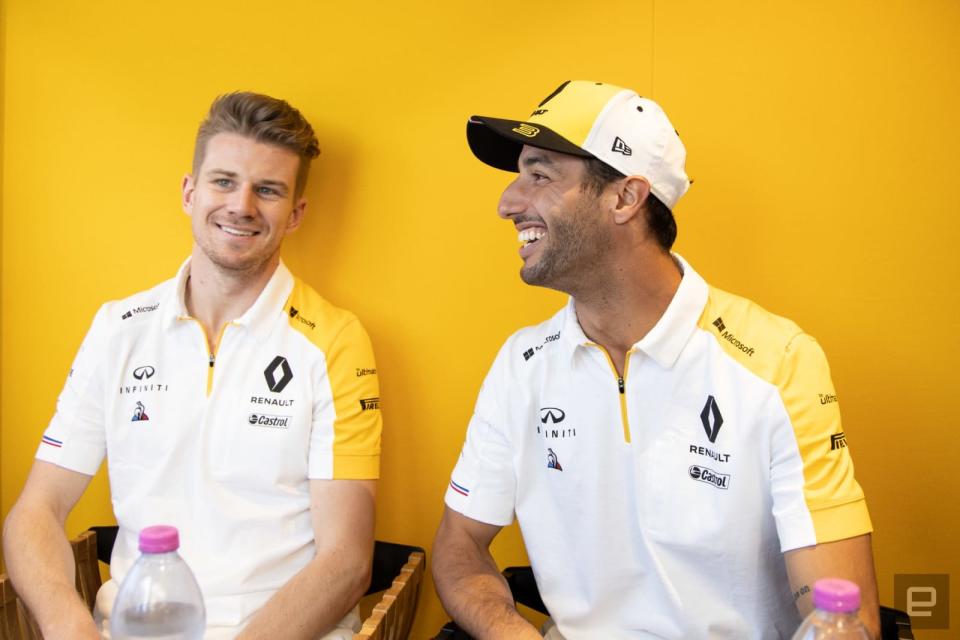
Still, it was clear that the sixth- and seventh-place finishes in Canada, by far the team's best result this year, were important to Ricciardo. "Obviously, our expectation was much more than what we had achieved," Ricciardo told Engadget. "So to get that, and to get a big result, sixth and seventh and big points, it felt like something we deserved. So that was a nice relief."
The problems were on the Enstone chassis, rather than the power unit, which is made in Viry-Chatillon, France. "We've made lots of progress with [the] motor and there's still a small advantage for Ferrari but with the chassis, the problems are bigger," said team executive director Marcin Budkowski the day before the French Grand Prix. "Unfortunately, it's not advancing as quickly as we want, and we're fighting against other teams who are much stronger, who have more resources than we do. We'll really need to see what results we obtain in the next few races as a guide to where we're at."
In fact, rival team McLaren, using a Renault motor, was outperforming Renault. "McLaren is ahead of us because they have a better chassis," Stoll admitted ahead of the race. "We know it's not because they have better drivers and we know they don't have a better motor because it's the same."
For the French Grand Prix, Renault came in with both engine and chassis changes. "All the team has been working hard to get these upgrades, which we've put on the car this weekend," said Ricciardo before the race. "The car had good performance all weekend long and I think we can have a very good race. Hopefully a similarly good Sunday like we had two weeks ago in Montreal."
After all that optimism, however, the results weren't good for Renault at Castellet in what turned into a snooze of a race. And more recently, things have not gone better. In the last four races -- which were at least incredibly exciting -- Renault had only two top-ten finishes and sits in sixth place in the constructor standings, well behind Toro Rosso and McClaren which, again, uses a Renault power unit. As it stands, with nine races left, the team would have to pull a miracle just to match its result from last year.
If Renault does manage to get its 2019 season on track, it might bode well for 2020 because it won't need to make substantial changes to its current car. After that, however, everything is going to change -- and that could be good for the team, and it could be bad.
The 2021 rule changes
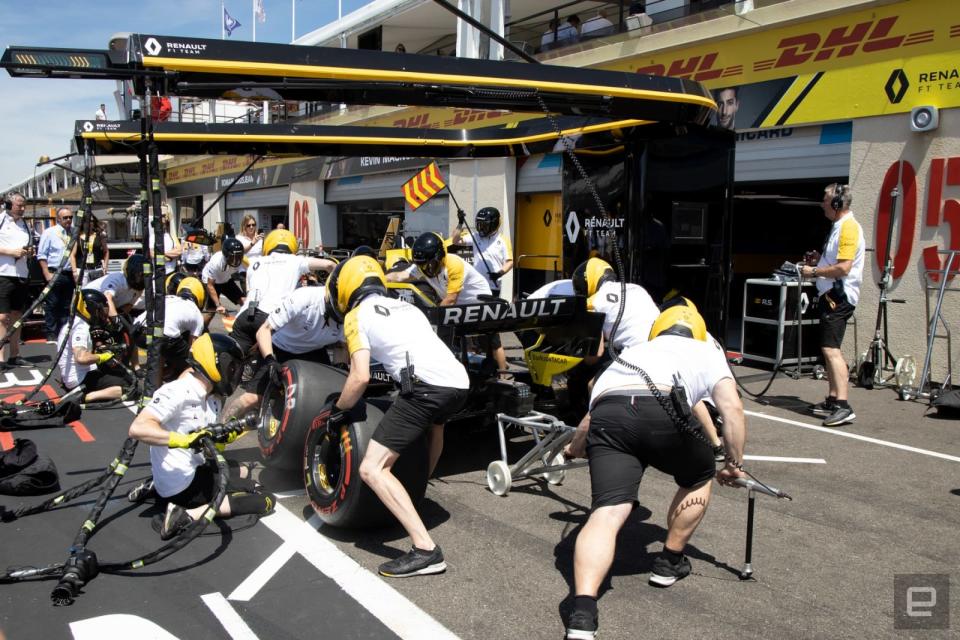
Renault lobbied very hard to get the FIA to introduce a budget cap and that's exactly what's going to happen. Starting in 2021, teams will be limited to spending $175 million, not including driver and top executive salaries, marketing and engine costs. Renault might stand to benefit most from the rules, as the new budget is nearly what it spends already (though Renault claims the new budget will require it to spend much more).
By contrast, Mercedes, Ferrari and Red Bull will have to significantly cut spending. "Lots of other teams will need to restructure because they're currently way above that," said Stoll. "And so, that will let us be more competitive with the big teams."
The timing of the budget cap's introduction is awkward, though. In 2021, Formula 1 is also introducing new rules and completely redesigned cars. To build and conceive them, however, rich teams will be able to spend as much money as they want in 2019 and 2020, before the budget cap comes in.
"What's too bad is that the budget cap won't be implemented until the start of the 2021 season," Budkowski said. "However, the 2021 cars will go into development this year and next, with no budget cap applied. That means there's a good chance the big teams will be able to keep their lead and reduce the competitiveness, right from the very start."
If Renault is right and the big teams hold on to their advantages despite rule changes and a budget cap, it's going to be bad for Formula 1.
"Obviously, the transition will be hard, but we think it's worth it to create more equality between the teams," said Stoll. "Mercedes is winning everything, and that bores everyone."

